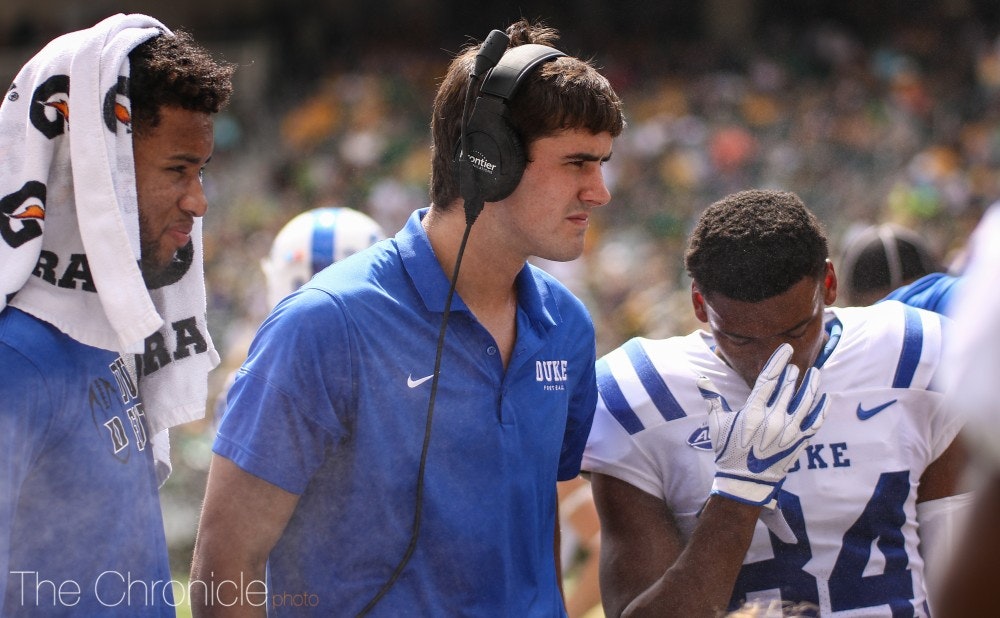Clark Bulleit and Kevin Gehsmann are seniors on the Duke University football team, but they rarely see any time on the field. On September 8th, however, the team’s star quarterback, Daniel Jones, fractured his clavicle and the two benchwarmers finally got a chance to leap into action – but not on the field. Bulleit, a biomedical major, and Gehsmann, a mechanical engineering major, decided to put all of their efforts into getting Jones back in action as soon as possible, and they used their respective academic knowledge to do so.
The previous semester, Bulleit had completed an independent study at the university’s Innovation Co-Lab, in which he created a 3D printed wrist brace. With approval and support from the team’s medical staff, he and Gehsmann began working on a 3D printed brace for Jones.
“The training staff helped us to identify pressure points, and took Daniel through his range of motion, telling us where the brace could or could not go,” Bulleit said. “We would determine how to change the shape of the brace to cover the collarbone and retain its integrity while not hitting the pressure points.”
Bulleit and Gehsmann created nine prototypes altogether, using a basic 3D printer before turning to a PolyJet printer for the final product.
“If we are able to help Daniel [Jones] get healthy, then we are helping the team to win games,” Gehsmann said.
The final brace was custom-fit to Jones and distributed impact from any hit away from where the initial fracture had happened. Using the brace, Jones returned to the field before his projected return time, and he has been doing well. He has completed 64.5 percent of his passes along with four touchdowns and two interceptions. He can also take a hit without worrying about further damage to his collarbone; in fact, he has been sacked seven times and was able to stay in the game.
Bulleit and Gehsmann were able to create the 3D printed brace, one of the first to be used in high-end athletics, thanks to their academic knowledge as well as their access to top-of-the-line 3D printing equipment. They’re rightly proud of what they accomplished, and while they may not be directly receiving the accolades that Jones does when he steps onto the field, they share in his glory through the knowledge that he likely wouldn’t be playing yet without their help.
This isn’t the first remarkable story to come out of Duke University’s Innovation Co-Lab, which has produced 3D printed medical training models and other healthcare aids, along with thousands of other 3D prints. This may be one of the lab’s most, if not the most, high-profile 3D print yet, as it affects Duke’s beloved and successful football team. That success was in jeopardy because of the injury to its quarterback, but thanks to two innovative students and the excellent lab available to them, the Duke Blue Devils will continue to play at their best.
Discuss this and other 3D printing topics at 3DPrintBoard.com or share your thoughts below.
[Source/Images: Duke University]
